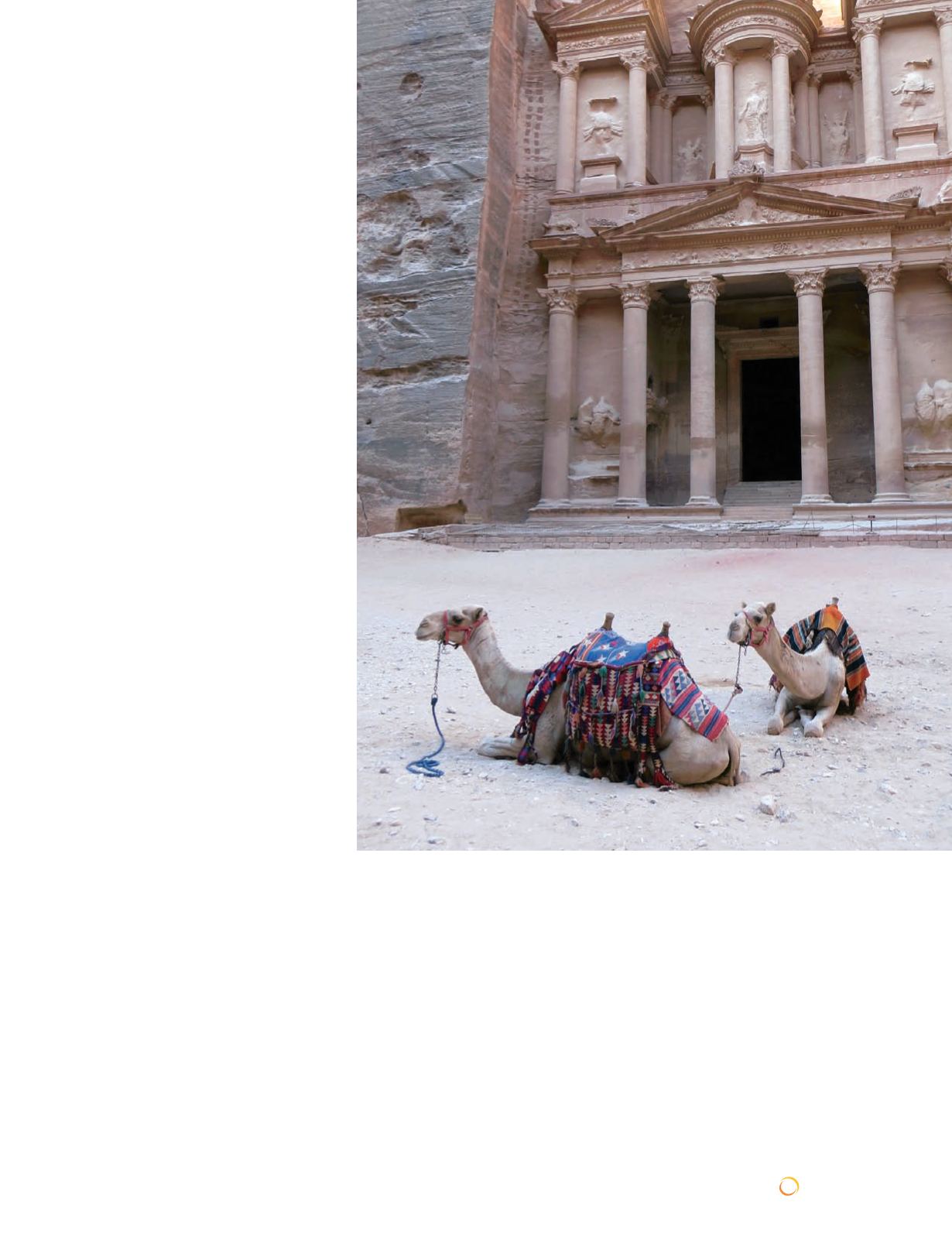
APRIL 2014 SUNRAYS | 35
ONLINE:
SCTXCA.ORG
our plans to travel in the West Bank, as
well as in Israel. “Why are you going to
Ramallah? There are no tourist sights
there!” was the suspicious question.
Ultimately, they let us pass, but it was
clear from then on that Israel took its
security very seriously. There is even a
building code that requires all homes
erected since 1995 to include bomb shel-
ters.
Christians, Muslims and Jews all revere
various sites in Israel; it is one of the
things that makes peace so contentious.
We were told, over and over, that the land
issues and others could be settled, but
who controlled Jerusalem was so emo-
tionally charged between religious Jews
and Muslims that the only prediction
for resolution was “when the Messiah
comes.”
Our travels took us through Tel Aviv (a
modern, almost European-feeling city),
up the coast to Haifa, then to Nazareth,
and to a kibbutz on the Golan Heights
where Syrian snipers once took potshots
at the Israelis working the fields below.
Once a desert wasteland dotted with
Syrian military installations, the Golan
today is a green and cultivated wonder,
made fruitful by Israeli inventiveness
and water from the Sea of Galilee below
(now called Lake Kinneret).
We stopped for a couple of days at the
Dead Sea to take the required dip and
prove to ourselves that the salt content
really DIDmake it impossible to sink (or
to swim, for that matter). The salt con-
tent of sea water is 2.7 percent; the salt
content of the Dead Sea is 37 percent.
A Holy Land
Following the shores of the Sea of Gali-
lee, we came to Capernaum and to the
Mount of the Beatitudes, where Jesus
taught that the meek shall inherit the
earth, and where he miraculously fed
the 5,000 with just five loaves of bread
and two fish.
Then, to Jerusalem, with its old city; the
Western Wall; the stations of the Via
Dolorosa; the emotionally draining Yad
Vashem holocaust museum; the Israel
museum with its Dead Sea Scroll dis-
play; the ruins of the City of David.
Any visit to the Holy Land can be an
emotional one for the religious pilgrim
tracking the steps of Jesus. All of the
traditional sites—the place where Jesus
was born, the field where the shepherds
saw the angel announcing the birth,
the places where Jesus taught and the
places where he suffered—are covered
with churches and pilgrims now. The
14 Stations of the Via Dolorosa, where
Jesus is supposed to have made his last
journey from Pilate’s House to the place
of his crucifixion, actually was a route
identified by the crusaders hundreds of
years after the fact, the street level of
Jesus’ time lying at least 35 feet below
the current streets. It does not decrease
the impact of these places, however. As
our guide told us, “Even if this is not
the exact place, hundreds of years of pil-
grims believing and praying and crying
over it has made it holy.”
Continued on the next page
The “Treasury” building at the entrance of Petra, Jordan.


